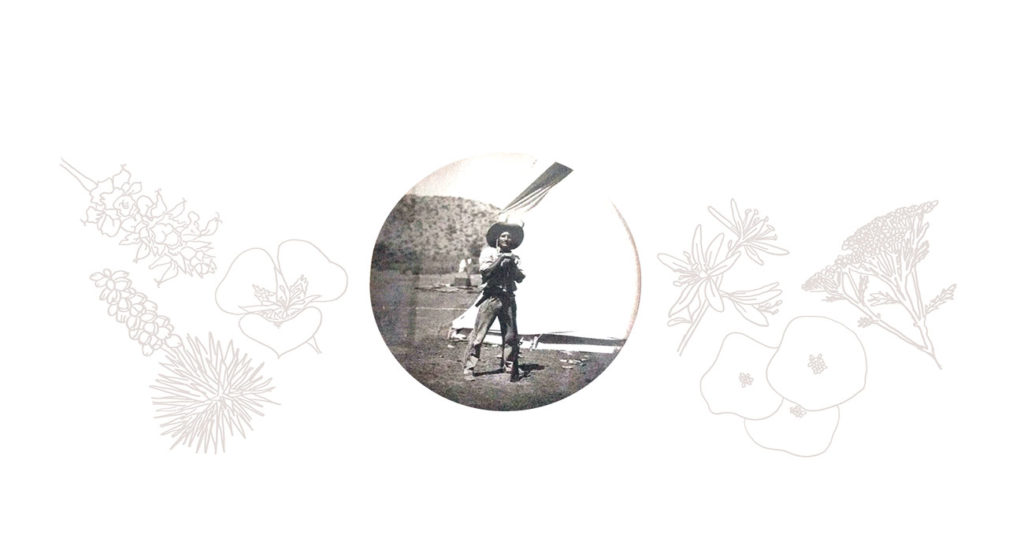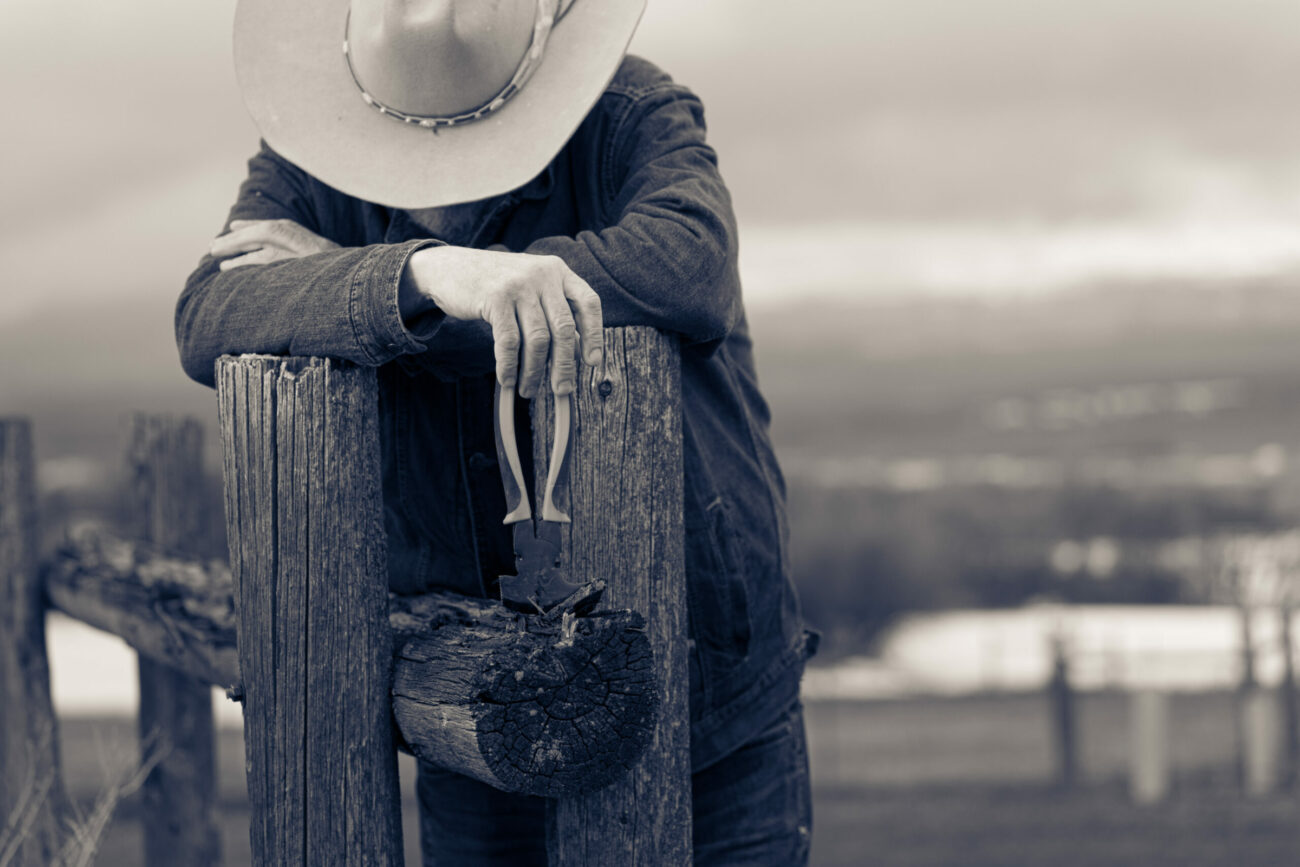Unlocking The Secrets of Native Plants
When Bill Varga read a book about Jim Bridger back in third grade, he didn’t know he was setting himself on a path that would add a layer of meaning to his future career as a plant scientist and fuel a passion for studying and reliving the mountain man life, even if only for a few days at a time.
Like other boys at St. Richards Catholic School in North Olmstead, Ohio, Varga was enamored by stories of the American West.
“It was the 1950s, the time of Fess Parker as Davy Crockett, and every boy wanted to be Davy Crockett or Roy Rogers,” he recalls. “The mountain men are the glamour part of pioneering and exploring the West, but in order to survive, the people we think of as pioneers had to do what the mountain men did.”
Often, what those who survived in unfamiliar and unforgiving places did was learn from Native Americans who had passed on knowledge for generations about plants and other resources that sustained life, healed wounds, and cured illness. Varga BS ’72 MS ’74, a retired USU horticulturist and Extension faculty member, and namesake of the Varga Arboretum at the USU Botanical Center, continues to bring plants that are native or well-adapted to various parts of Utah to the nursery industry. It is rewarding but frustrating work and the challenges illustrate misperceptions people have about native plants: just because something grows wild doesn’t mean it will transplant to your yard or can be propagated in a greenhouse and sold at your local garden center.
He and plant scientists Larry Rupp and John Carman memorably learned that lesson when they tried to grow sego lily in a lab, greenhouse, or research plot. “We thought we had figured out the technology to propagate them and produce thousands of plants, but once we moved them into pots they died,” Varga says. “Nurseries wanted them, but we couldn’t do it. Sego lily is quirky and that’s not a great trait if you want to grow them in a greenhouse or rely on them for food.”
Generations ago people were keenly aware of seasonality and life was inextricably connected to nature’s cycles, especially on the frontier. Because chemical compounds in plants change over time, native people moved to follow prized vegetation, like camas. Bulbs of blue camas were an important food for Native Americans, mountain men, and pioneers—important enough that wars were fought over access to camas prairies. The bulbs must be harvested in the spring when the plants are in bloom because amid the blue camas are toxic white camas, also known as death camas. The flowers were the only way for people to make an important distinction between food and poison.
“People now don’t notice the Indian potato that blooms as early as February because it is so tiny,” Varga says. “But to me, there is a spiritual connection to that little plant because finding it meant you had made it through the winter.”
Varga selected a few examples of edible, medicinal, and useful plants in Utah that would have been prized by early people in the region.
MEDICINAL
All-heal (Prunella vulgaris var. lanceolata) gets its common name because of its wide medicinal use. The flowers and leaves are crushed, usually blended with other plants, to make a paste. It can also be brewed in a tea to treat a sore throat.
Common yarrow (Achillea millefolium) grows in many regions and is widely used as a pain reliever. It is chewed to treat toothaches, steeped to make a tea to ease head colds or earaches, and crushed to make a poultice for burns and wounds.
EDIBLE
Sego lily (Calochortus nuttallii) is Utah’s state flower and credited with saving Mormon pioneers from starvation. Although sego lily fed many people before the pioneers arrived, Varga says, its popularity is boosted because it is beautiful. Its starchy bulbs were eaten roasted or boiled as a porridge.
Small Camas (Camassia quamash) blooms in spring and camas prairies, where many bulbs could be harvested at once, were the sites of camas bakes. Native people would dig broad pits and put a layer of heated rocks in the bottom, cover them with layers of damp grasses and camas bulbs, and cover the whole thing in order to steam the camas. Then the bulbs were eaten or mashed into a paste and patted into thin “tortillas” that were dried and eaten months later.
Miners lettuce or Indian lettuce (Montia perfoliata) is in the purslane family and has a beautiful round leaf with a tiny white flower at its center so it is easy to identify. Varga says it is “wonderful to eat fresh as it’s picked, but a little blue cheese dressing is a great addition.”
USEFUL
Mountain ninebark (Physocarpus malvaceus) stems can be stripped of their leaves and the bark peeled away. Then twisting the stem separates it into long fibers that are used for fishing line, woven into nets, or used as string.
Yucca (Yucca harrimaniae) is native to Utah, Nevada, Colorado, northern parts of Arizona, and New Mexico. Nearly every part of the yucca was used by early people in the West. It contains high levels of saponins, a group of chemical compounds used as shampoo and surfactants. Yucca fruit and roots were eaten, the stem fibers used as fiberscords, and the tough leaves used to make sandals.
MEDICINAL & EDIBLE
Yampah (Perideridia gairdneri) is sometimes called wild carrot. The stalks mimic tall grass until its cluster of tiny white flowers bloom. Yampah roots are about the size of an adult’s little finger and are crunchy, resembling the texture of water chestnuts. It grows at high elevations and blooms in summer. Uncooked roots are a gentle laxative. Baked or steamed roots contain carbohydrates and were eaten for high energy.






